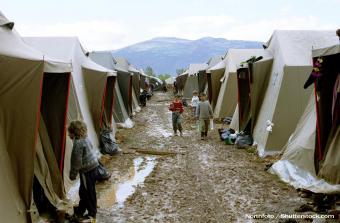Refugee & Asylum Policy
Recent Activity
UN Deputy High Commissioner for Refugees T. Alexander Aleinikoff offers remarks on durable solutions for the refugee protection system as part of MPI's Leadership Visions Series.
In its newest five-year "roadmap" for justice and home affairs policy, the European Union has made migration a priority area. But while the Stockholm program offers plenty of detail on issues like illegal migration and asylum, it offers few specifics as to the final goal. MPI's Elizabeth Collett analyzes the program's action points and looks at challenges facing its implementation.
In the United States, asylum on the basis of sexual orientation was first granted in 1994. Swetha Sridharan of the Council on Foreign Relations explains why U.S. immigration law focuses on sexual identity rather than sexual conduct, and what this distinction has meant for asylum seekers.
Counterterrorism policies have had an unintended, negative effect on asylum and refugee resettlement in the United States. Swetha Sridharan of the Council on Foreign Relations explains the origins of the material-support bar, which groups it has affected, and how the U.S. government is addressing the problem.
The situation in Iraq remains extremely precarious for civilians, with additional thousands being displaced by violence and persecution even as refuge becomes harder to find – either internally or in neighboring countries. This report looks at the refugee situation in the country.
Migrants' networks and relatively small travel distances help explain migration from one developing country to another. Dilip Ratha and William Shaw of the World Bank look at these and other reasons for and effects of South-South migration.
This report explores the role of ethnic community-based organizations as drivers of refugee integration. It highlights contributions, challenges, and best practice methodologies identified through site visits to refugee-serving ECBOs across the country, and offers recommendations for enhancing the capacity and sustainability of refugee integration services.
Approximately 50,000 of Germany's 170,000 tolerated asylum seekers are expected to will qualify for a residency permit under a law passed in March 2007. MPI's Eric Leise reports.




![cover_bridging_divides[1]](https://www.migrationpolicyinstitute-europe.com/sites/default/files/styles/publication_thumbnail/public/pub_covers/cover_bridging_divides%5B1%5D.jpg?itok=5d8DrGS8)